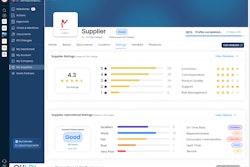
In the realm of procurement, technology has emerged as a transformative force. The implementation of procurement technology platforms is known to increase transparency, centralize spend management, enhance data quality and compliance, deliver cost savings, and provide real-time insights. Shifting from manual to digital processes is not just an upgrade; it represents a radical change in how organizations operate and manage resources. However, the reality is that large-scale business transformations often fail. Boston Consulting reports that a full 70% of digital transformation initiatives are deemed unsuccessful.
One major challenge for companies with manual or older systems is that they have no comprehensive view into global spend. This can lead to paying different prices for the same product and an inability for procurement teams to identify opportunities to drive standardization — leaving volume incentives unachievable. Even with documented procurement policies, compliance can remain low, and spend with strategic suppliers falls short leading to reduced relationships with partners. e-Procurement systems offer many fixes, but if they are not optimized for your specific business needs, you could be missing out on opportunities for better supplier partnerships and cost leadership.
There are several digital platforms available that can help achieve unified global spend management across your annual purchases of goods and services. Making the most of your platform’s features and functionality will enable you to increase visibility and procurement policy compliance and drive spend to your strategic suppliers, ultimately achieving better cost leadership.
Let’s discuss the key elements to transforming legacy procurement: how to get started, how improvements lead to control over company spend, and how to encourage adoption of new practices and technologies. In our experience, procurement processes, when streamlined with technology, can significantly diminish the burden of manual work and increase financial gains. With technology at the helm, procurement becomes less about navigating paperwork and more about strategy and value creation. Increased efficiency is a direct outcome, paired with an improvement in policy compliance.
Where to Start
It is very important that you have enthusiastic buy-in from all levels. With strong executive support and effective tools, you can succeed in driving more spend under management, resulting in cost reductions and added transparency. Most of the available software platforms are easy to use, but you also want to plan for effective training to ensure your teams actively adopt the software. I recommend a three-phase approach:
- Strategic assessment — Make an honest analysis of your company’s unique strategic needs and goals. Analyze available software, carefully consider your resources, and develop a technology and training roadmap that fits your team and company objectives. Focus on transforming the organization’s optimized time from tactical to strategic, not on headcount reduction.
- Implementation — Don’t re-invent the wheel. Tap into consultants and solution providers who have done this before and benefit from what they’ve learned. Find others who live and breathe procurement to support your transformation.
- Optimization — If you aren’t hitting your goals, consider additional steps to improve results. Look at custom training or staff augmentation services or consider implementing a digital adoption technology. These additional steps can make the difference between success and failure.
Control Over Spend
An important aspect of procurement transformation is the control over spend. Curated catalogs offer organizations greater command over expenditures, thereby reducing maverick spend, driving enhanced supplier relationships, and improving data quality. Efficiency is increased, and a path towards cost leadership is forged. When organizations gain more control over their spending, they are better positioned to prioritize resources strategically and achieve their financial goals.
Newly gained process efficiencies and data derived from software will help your procurement team pivot from tactical to strategic, challenging the organization to drive for a higher ROI. Time can be spent analyzing data to identify key improvements that simply weren’t possible without the technology. Using analytics, for example, you can create KPI dashboards to show on-catalog execution and drill down on transactions, analyze purchasing trends, and identify where new category strategies, change management or guided buying practices may be required.
The ability to configure and adjust software to your specific objectives is critical. The technology should enable tailoring to your standards and policies including down to the detailed definitions of fields and other particulars. The way you set up the platform might be fundamentally different than someone else using that exact same platform, so it’s crucial to select technology that allows you to optimize the experience for your company.
The influence on buyer behaviors is another feature of elevated procurement. Enabling digital adoption that allows procurement to communicate to the end user or influence their buying channel decisions can become a game-changer that many have not yet considered. Communicating the procurement agenda through controls is instrumental in reducing maverick spend and ensuring compliance. In a digitally enabled procurement environment, guidelines become easier to enforce and compliance becomes the norm rather than the exception.
Adoption Support
Many companies’ procurement organizations are either considering a digital transformation, are currently in the midst of one, or are looking back wondering how to get more ROI out of their project. To maximize adoption and compliance, we recommend deploying digital adoption software to super-charge the transformation and foster better adoption rates.
Digital adoption software can enhance change management, foster better communication and bolster user participation rates. Of course, success requires more than software on a screen. Transformations should also be underpinned by effective communication, a continued drive to improve, and comprehensive training programs. There is a finite time frame to capture and hold people's attention when explaining the purpose of a major change. Companies must communicate clearly with the individuals within their organization about how to navigate the new technology and execute their daily job functions in a different way. But using human capital to execute this task can be unmanageable. By utilizing digital adoption, walking staff step-by-step through new processes digitally is a powerful, hands-on aid in achieving your objectives.
Moreover, the capabilities of digital adoption programs are vast and versatile. They can be deployed centrally and tailored according to the specific needs of an organization. Implementing such technology does not necessitate extensive IT knowledge or intricate integration with existing systems. This relative ease of deployment makes it an attractive solution for many organizations, irrespective of their IT competencies or resources.
The journey to procurement optimization is an important one and requires enthusiastic support at every level — from top executives to front line buyers. It demands a commitment to change management, a willingness to adopt new technologies, and an understanding of the value that such a transformation can bring. The benefits are many and extend beyond cost savings to improved efficiency, increased control over spend, enhanced compliance and better buyer behavior. While the path may be challenging, the rewards are significant. It is an investment in the future — a future where procurement is not just a tactical function, but a strategic asset for organizational success.




![Pros To Know 2026 [color]](https://img.sdcexec.com/mindful/acbm/workspaces/default/uploads/2025/08/prostoknow-2026-color.mduFvhpgMk.png?auto=format%2Ccompress&bg=fff&fill-color=fff&fit=fill&h=100&q=70&w=100)







![Pros To Know 2026 [color]](https://img.sdcexec.com/mindful/acbm/workspaces/default/uploads/2025/08/prostoknow-2026-color.mduFvhpgMk.png?ar=16%3A9&auto=format%2Ccompress&bg=fff&fill-color=fff&fit=fill&h=135&q=70&w=240)





